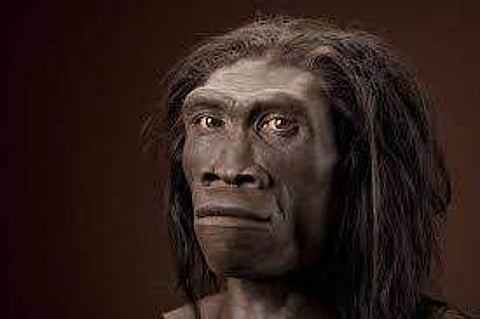

Researchers have unearthed the earliest known skull of Homo erectus, the first of human ancestors in behaviour and anatomy, a finding that adds more than a hundred thousand years to the first appearance dates of the species.
Following years of excavation at the fossil-rich site of Drimolen in South Africa, researchers including those from the Arizona State University in the US, recovered several new fossils, including a skull attributed to Homo erectus.
According to the study, published in the journal Science, the skull is dated to be two million years old, making it the most ancient fossil Homo erectus known, and pushing back evidence of the first appearance of the species by more than a hundred thousand years.
The skull and other fossils recovered from the site may lead to a revision of our species' evolutionary history, the scientists noted in a statement.
"Unlike the situation today, where we are the only human species, two million years ago our direct ancestor was not alone," said Andy Herries, study lead researcher from La Trobe University in Australia.
The high-resolution dating of the fossil deposits showed that the age of the new skull pre-dated Homo erectus specimens from other sites within and outside of Africa by at least 100,000 to 200,000 years, the scientists said.
Based on this evidence, and earlier studies published on the ancient human ancestors, the researchers confirmed an African origin for Homo erectus. The skull, reconstructed from more than 150 separate fragments, is of an individual likely aged between three and six years old, the study noted. This gave the world a rare glimpse into childhood growth and development in these early human ancestors, they said.
Other fossils recovered from the site belonged to a different species -- in fact, a different genus of ancient human altogether, the scientists said. These included the more heavily built, robust human ancestor Paranthropus robustus, known to also occur at several nearby cave sites preserving fossils of the same geological age.
The scientists also noted that a third, distinctive species, Australopithecus sediba, is known from two-million-year old deposits of an ancient cave site down the road from Drimolen. "What is really exciting is the discovery that during this same narrow time slice, at just around two million years ago, there were three very different types of ancient human ancestors roaming the same small landscape," said study co-author Gary Schwartz, a paleoanthropologist from Arizona State University.
.
"We don't yet know whether they interacted directly, but their presence raises the possibility that these ancient fossil humans evolved strategies to divvy up the landscape and its resources in some way to enable them to live in such close proximity," Schwartz said.
The scientists also probed into the role played by changing habitats, resources, and the unique biological adaptations of early Homo erectus on the eventual extinction of Australopithecus sediba in South Africa.
"The discovery of the earliest Homo erectus marks a milestone for South African fossil heritage," said study co-author Stephanie Baker from the University of Johannesburg in South Africa.
